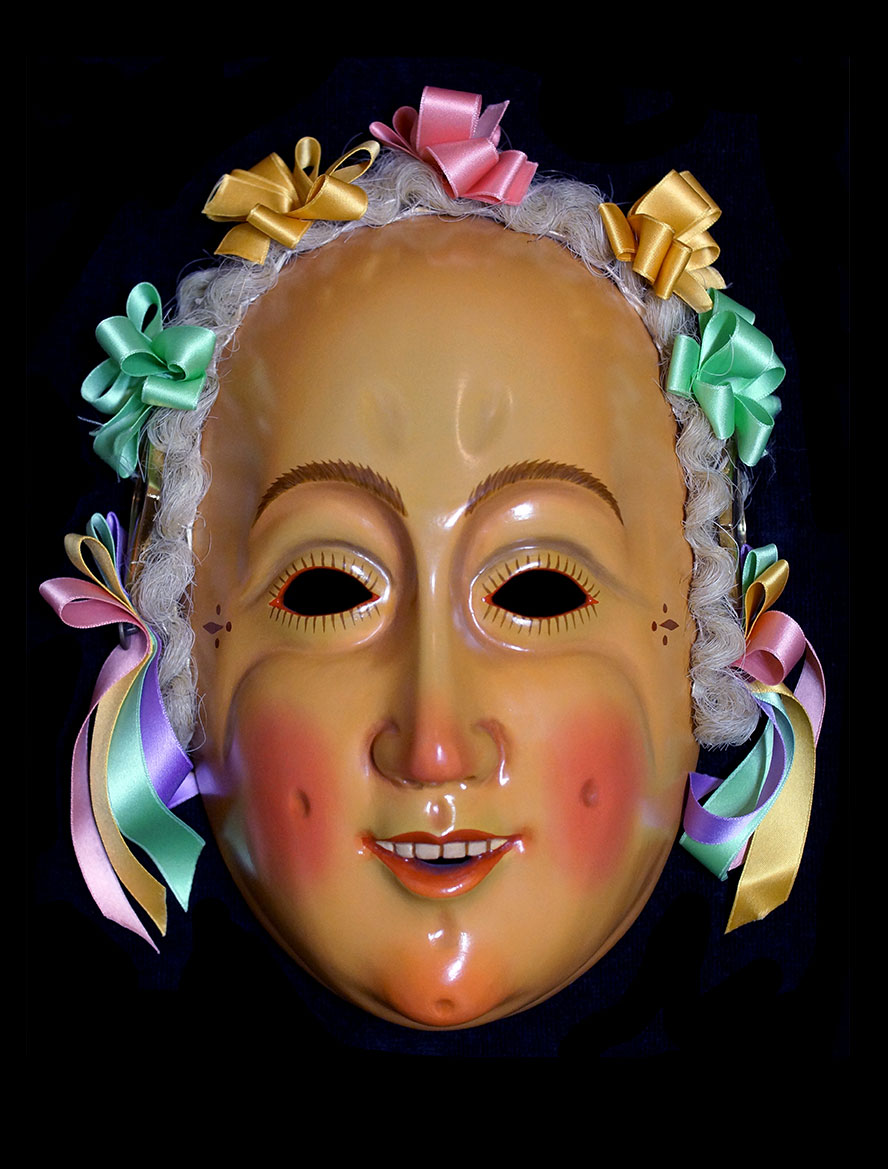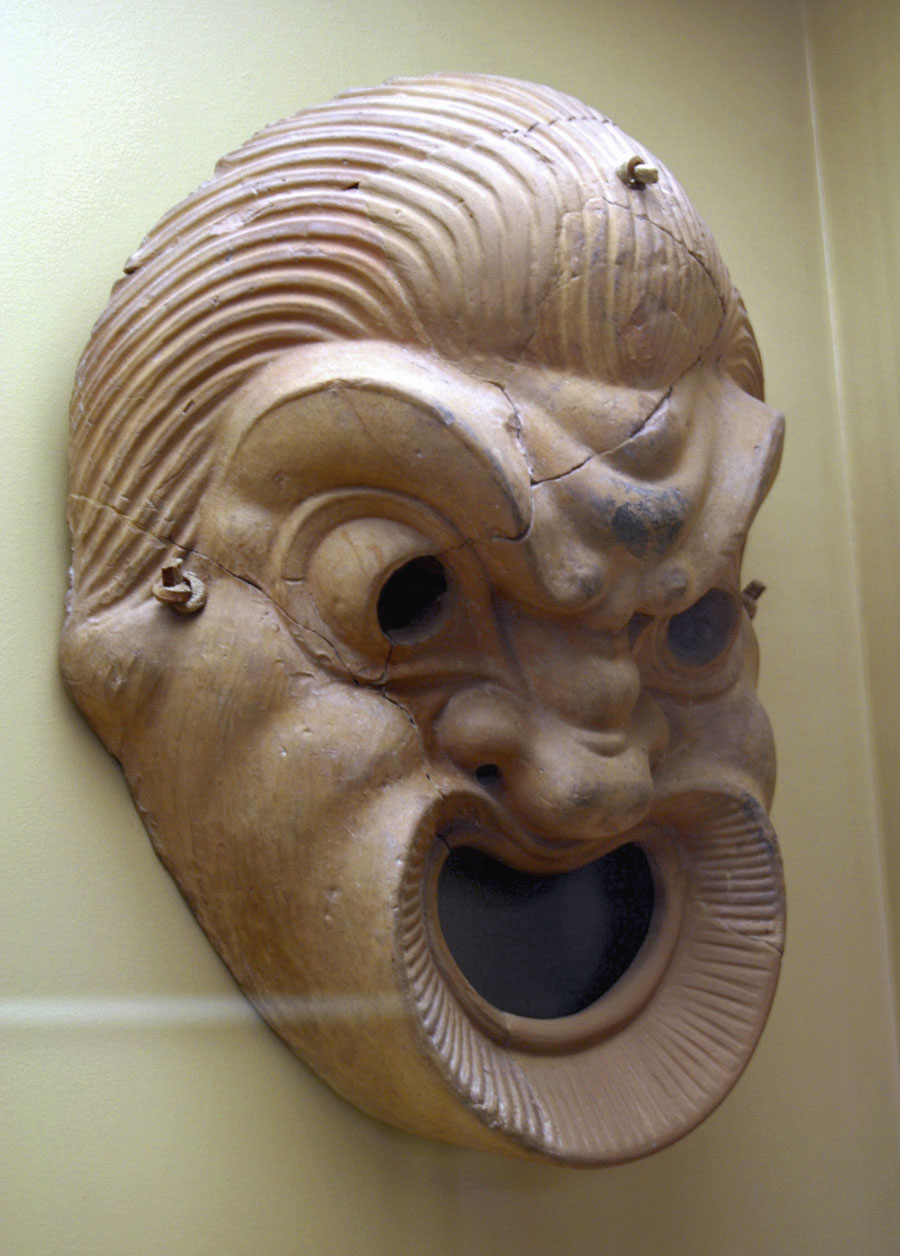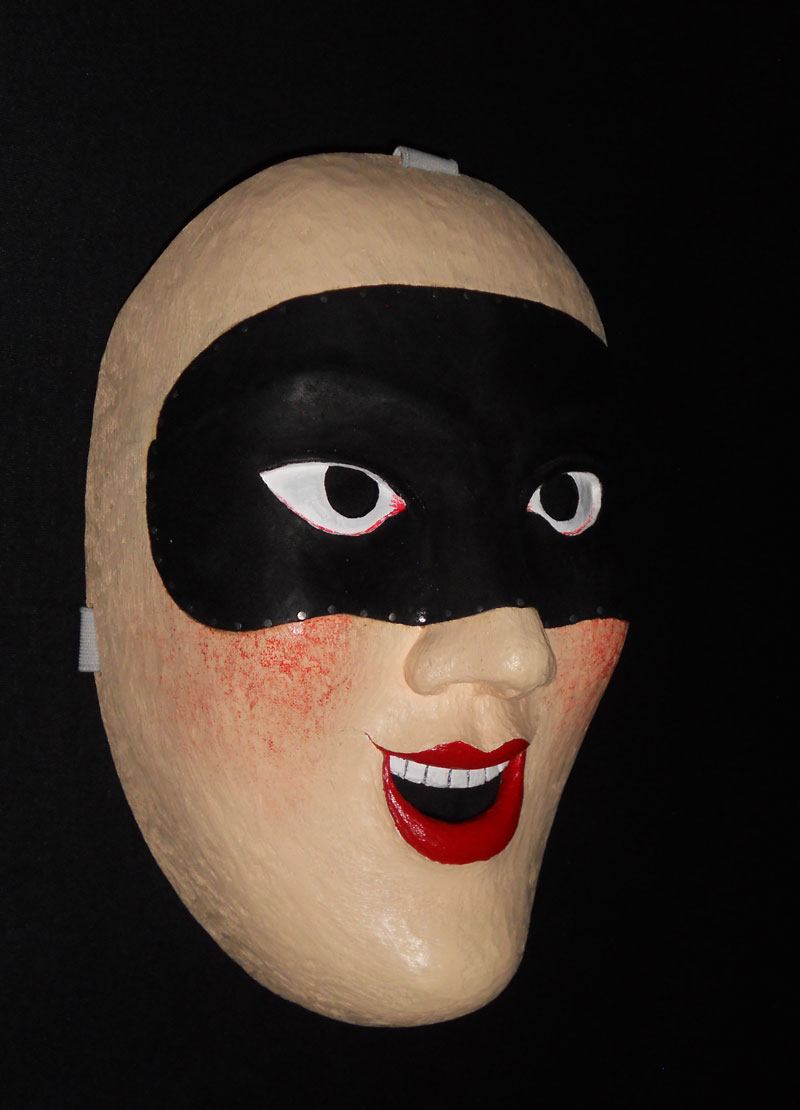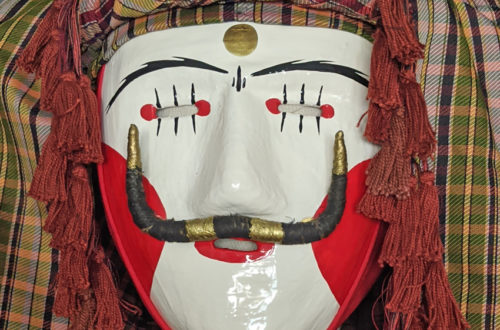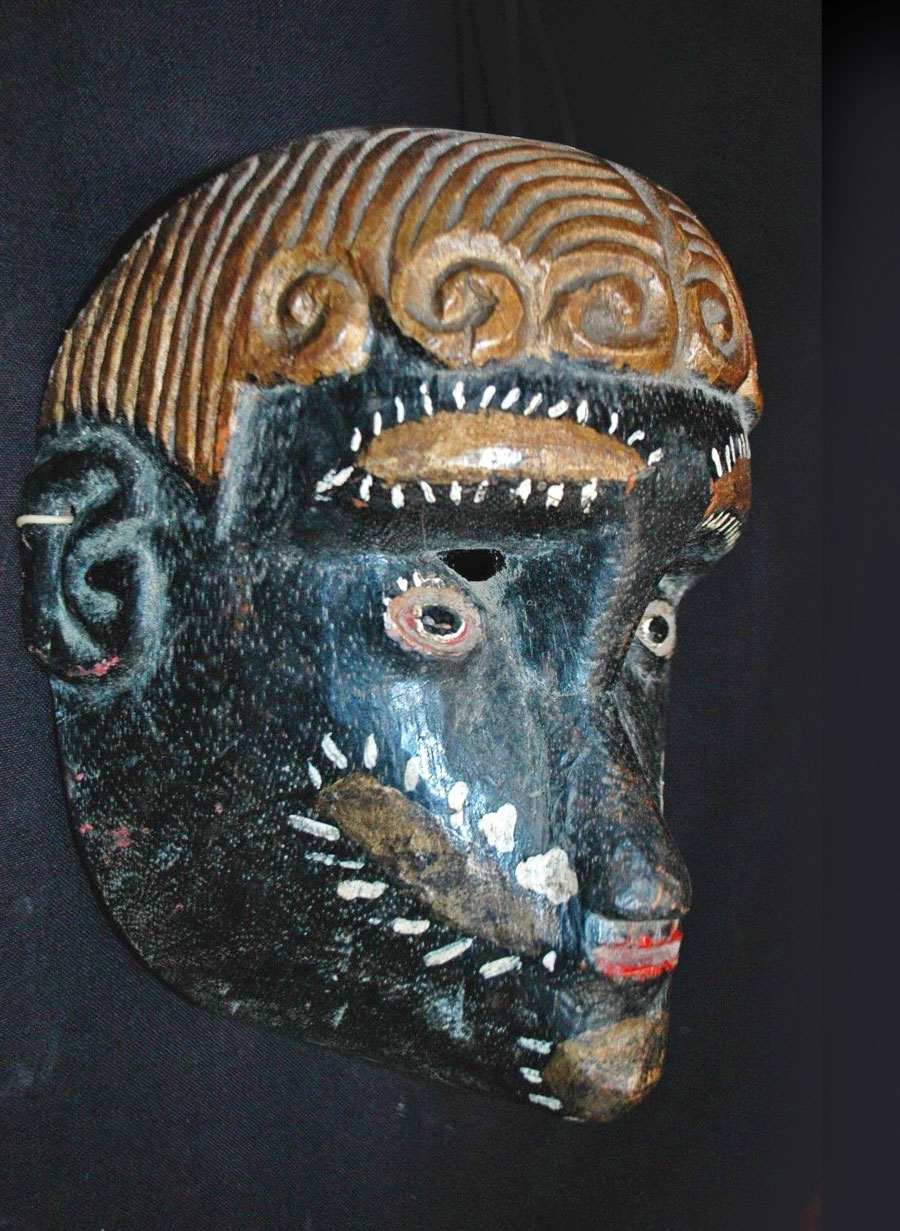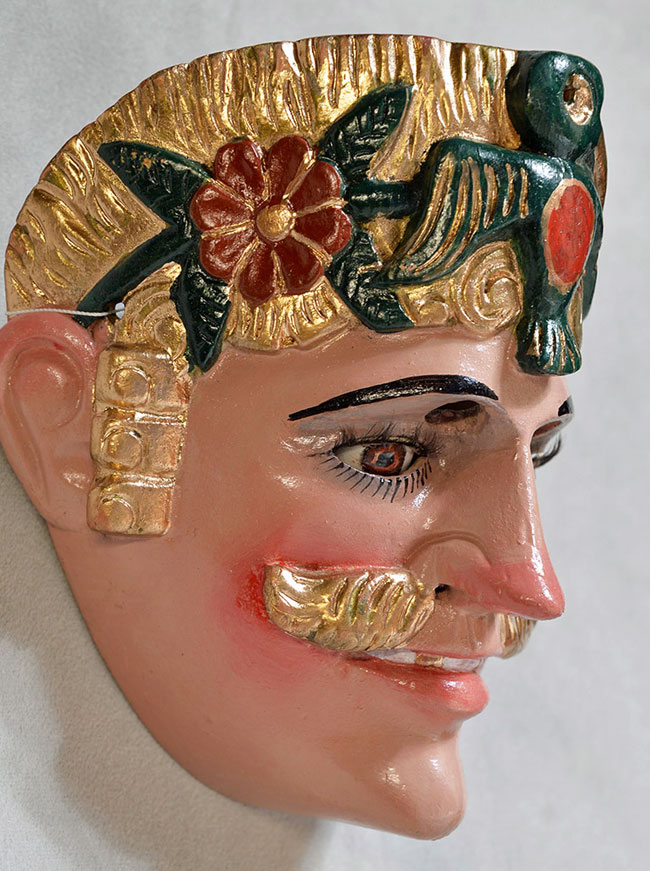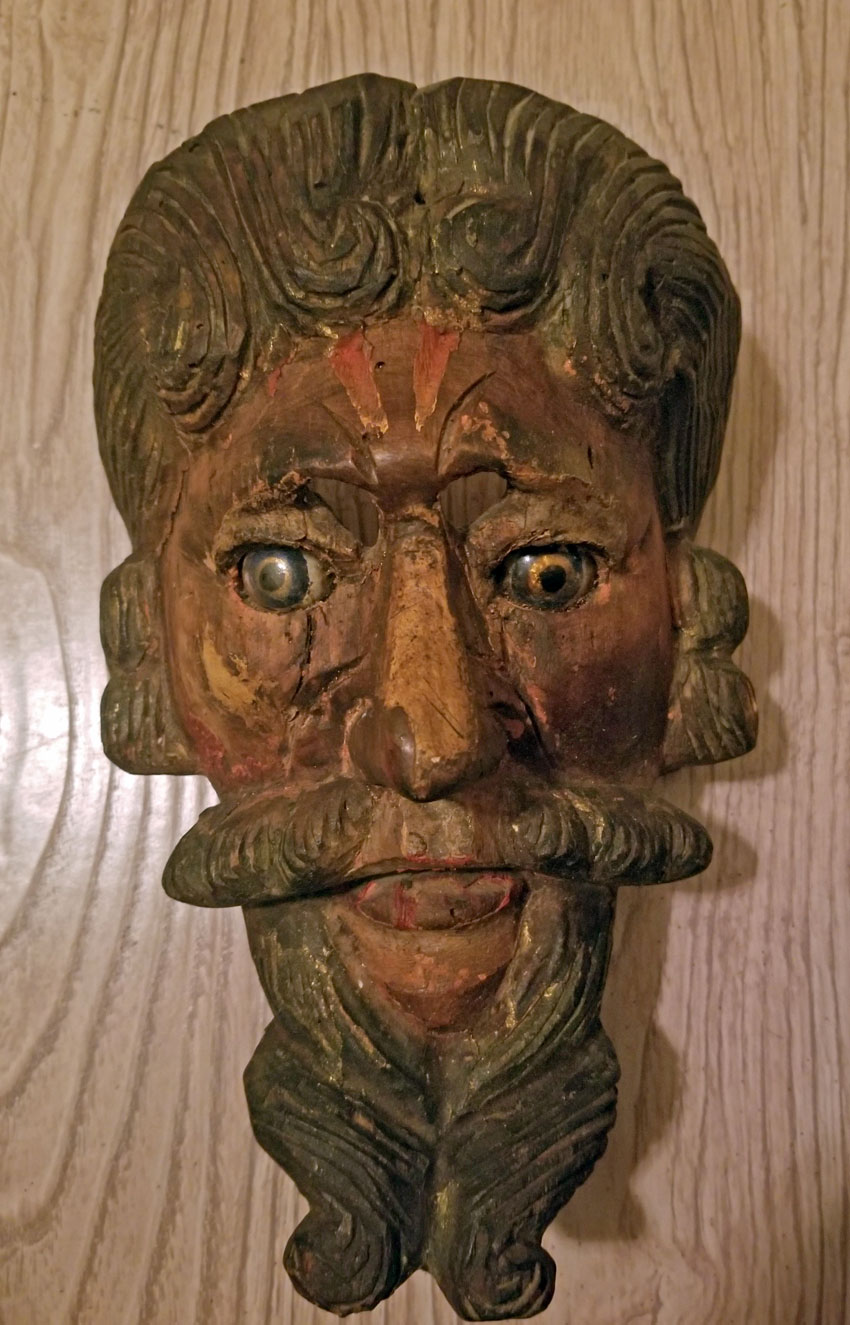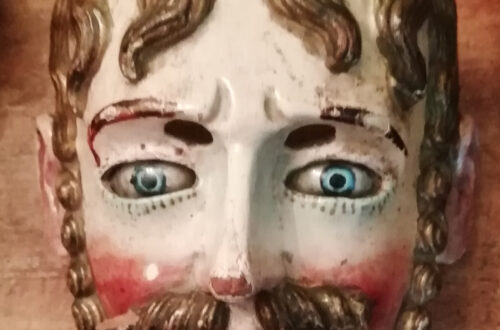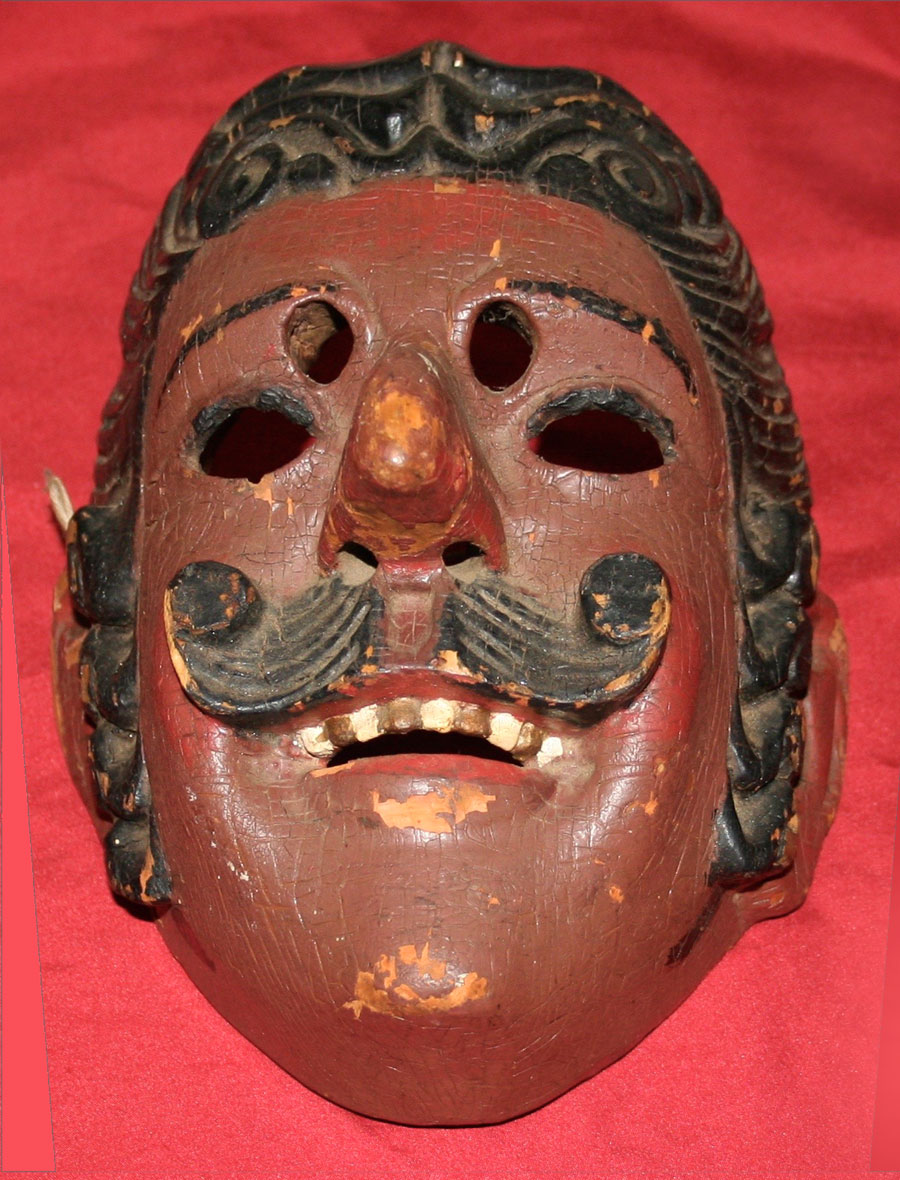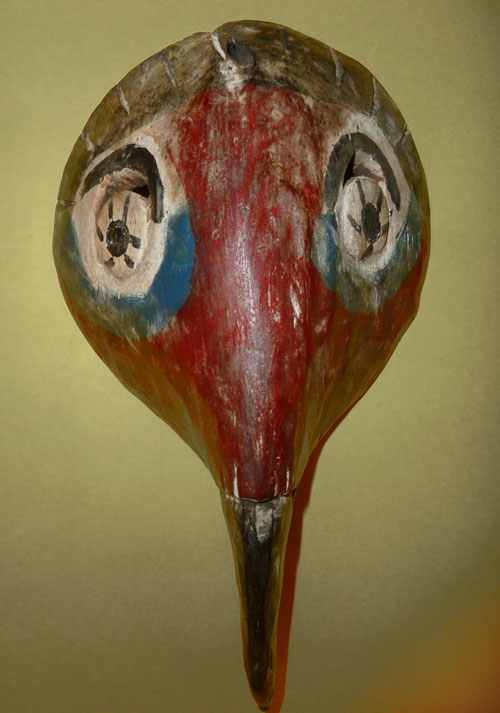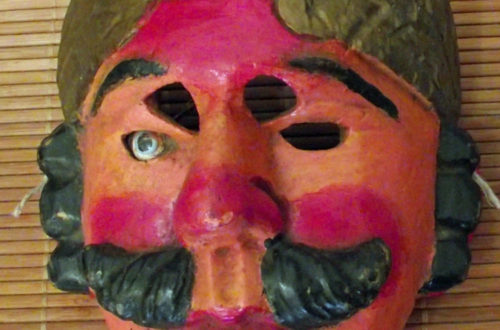Q: I was wondering how a German mask is made? Jimmy, 1354 A: That was a beautiful photo you sent, but a little low in resolution. So the main photo is a female version of yours from the Second Face museum of cultural masks. Here is the beginning of their description. TITLE: Fasnet Gschell Mask COUNTRY: Germany SUBREGION: Rottweil ETHNICITY: Swabian German DESCRIPTION: Gschell Narro MAKER: Helmut Kramer CEREMONY: Fasnet (Carnival) AGE: ca. 1970s-1980s MAIN MATERIAL: wood OTHER MATERIALS: oil paint; horsehair; satin ribbons; mirrors Yours (second mask) is a male version of the same mask. To learn how they are made, do a Google search. Helmut Kramer was…
-
-
Guatemalan monkey mask
Don’s mask of The Mexican from a Guatemalan dance inspired me to share this picture with you of The Monkey. There are lots of different animal masks used in the popular Deer Dance. Best liked by tourists and collectors is the monkey character. This one is old and used. Newer ones are usually painted in bright black, white and red, with no golden hair. This little country practices masquerade a lot. As you can see on the list to the right, a separate category is devoted to Guatemala.
-
The Mexican Guatemalan mask
Q: I recently picked up this mask. I think it is Guatemalan. It appears to be Pedro Alvarado. I am wondering if this may be the case. Any information would be helpful regarding this mask.Thank you, Don, 1352 A: You are close, but it is The Mexican, not Alvarado. You can learn about either character by going to Google. Here’s the good news. Your mask might be authentic. Most of the masks sent to me are usually reproductions or cheap tourist junk. For the latter I try to write a nice reply, but I don’t post it. A
